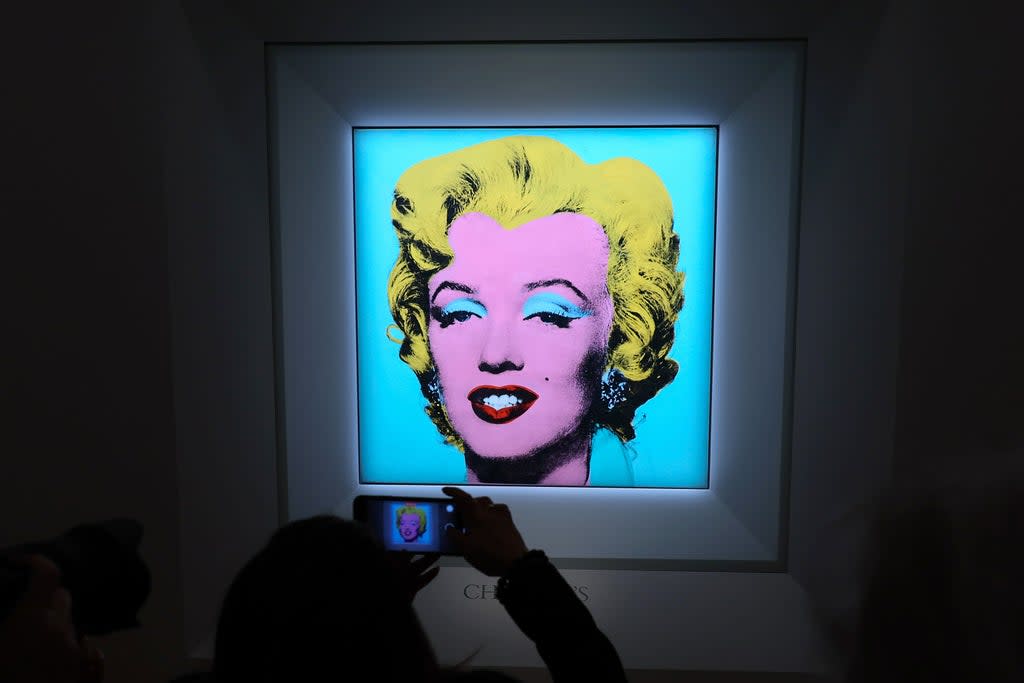Voices: Are art’s female muses finally reclaiming their power?

This week, Picasso’s Portrait of Dora Maar (1939) was the stellar lot at Sotheby’s Hong Kong, surpassing its estimate to make $21.6m (around £17m). In the accompanying catalogue, Maar is described as “Picasso’s lover and muse” who inspired him with “her unique charms and creativity”.
But, at a time when the wider art world is celebrating women like Maar as artists in their own right, why is the market more in love with the muse than ever before? Can this label, considered contentious by many, ever be empowering for a woman?
Pictures of muses have always been highly desired by dealers and collectors alike. Under the hammer, Picasso’s portraits of women have long been his best sellers. Back in 2016, Femme Assise, which depicts artist Fernande Olivier, sold for £43.2m at Sotheby’s London, while a portrait of Marie-Therese Walter, Femme Assise Pres d’une Fenetre, achieved $103.4m at Christie’s New York in 2021.
Picasso’s success has, undoubtedly, been defined by his muses. But, in the age of #MeToo, which has shed light on Picasso’s abuse of these women, why is there increased hype around his muses at auction? Perhaps sellers are cashing in, deciding that now is the right time to flip pictures of the female figure. Never before sold at auction, Picasso’s painting of Walter as a sensual sea monster, Femme Nue Couchee (1932), is expected to make more than $60m at its debut this month in New York.
Museums certainly have something to do with the growing demand for the muse. This season, London’s Royal Academy spotlighted another in its exhibition titled Whistler’s Woman in White: Joanne Hiffernan, while Dulwich Picture Gallery is exploring the motif of the lone female figure in Reframed: The Woman in the Window.
Historically, the muse has been presented as a passive model, possessed by a great male artist. Yet shows are beginning to re-evaluate these women as creative agents who played a huge role in the making of their own portraits. In fully crediting their contribution, power is transferred to the muse, making the label a positive one.
This fresh interpretation of the muse is reflected in each of the portraits coming up for sale. None are anonymous eroticised nudes or allegorical characters; instead, they represent real-life women who forged personal relationships with the artists who portrayed them. This celebration of close, collaborative partnerships is especially alluring in the post-pandemic world.
Picasso’s 1939 portrait of Maar reflects her identity as an artist whose photography inspired him to change his artistic direction. A circling pattern on her jumper points to Maar’s distinctive surrealism, in which hands emerge from spiralling snail shells. Even Walter, who appears as a sexy fertility figure in most of the portraits painted of her by Picasso, has been transformed into a nautical creature, indicating her prowess in the sea (which impressed Picasso, who couldn’t swim).
Joining Picasso’s muses at auction is Alice Prin. In Man Ray’s Le Violon d’Ingres (1924), two black “F” shapes are superimposed on her back, representing a violin. This musical image clearly signifies Prin as a singer, who earned the title “Queen of Montparnasse” for her performances across Paris during the jazz age. If this lot makes the low estimate of $5m, it will become the most expensive photograph ever purchased at auction.
Likewise, Andy Warhol’s Shot Sage Blue Marilyn (1964), coming up for sale at Christie’s on 9 May, invites viewers beyond the glossy surface of the muse. Not only was it produced after Marilyn Monroe’s unexpected death, but it was shot with a pistol by a visitor to the artist’s studio. Infused with tragedy, it raises questions about the cost of celebrity status in our influencer-obsessed society. After all, aren’t these muses the original influencers?
To keep up to speed with all the latest opinions and comment, sign up to our free weekly Voices Dispatches newsletter by clicking here
Released this week, Netflix’s new show The Mystery of Marilyn Monroe: The Unheard Tapes attests to our wider obsession with these high-status women and their true stories. What we want to watch is reflected in the saleroom; with an estimate of $200m, Warhol’s portrait of Monroe is set to become the most expensive 20th-century artwork ever auctioned.
Contemporary women are capitalising on their highly valued muse status, too: in her recent book, Letters to Gwen John, artist Celia Paul takes advantage of her association with Lucian Freud to sell her side of the story. Meanwhile, Pattie Boyd has been selling NFT images of the life she shared first with Beatles guitarist George Harrison and then with Eric Clapton. She chose to title her first gallery show “Through the Eyes of a Muse”.
A word that has historically been used to benefit male artists is finally being reclaimed across the art world to recognise and reward women. Key figures, from curators to dealers, are buying into this rebranding of the muse as influencer as well as icon; as the subject rather than the object of the masterpieces they co-created. As the muse’s star continues to rise, so will prices at auction.
Ruth Millington is an art historian, critic and author specialising in modern and contemporary art. She is currently writer in residence at the Birmingham & Midland Institute. Her first book, ‘Muse’, is dedicated to uncovering the incredible true stories of 30 muses from the Renaissance to today

